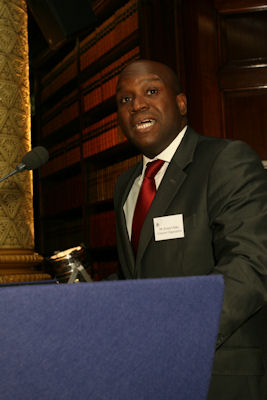
SMF Paul Christodolou
The age of top-down strategy is long gone. This doesn’t fit with the guiding principles of modern, empowered business cultures as it tends to disempower and demotivate the people who are our greatest asset. Strategy is now developed ‘middle-up’, often involving cross-functional teams of managers, subject experts, and the handful of wise old heads that often sit quietly hidden away in every organisation. This, in theory, shouldn’t be a problem. Indeed, since the people that live-and-breathe the business everyday know the strategic levers better than anyone, this should be the ideal way to create breakthrough thinking. All we need to do is liberate this latent power within the organisation to beat the pants off the competition (and, at the same time, save a fortune in high powered consultants).
The problem is that this middle-up, consultative process for creating strategy is prone to severe pitfalls if managed poorly. Without structure, process and clear deliverables, this can end up as ‘strategy by committee’. One board member of a leading airline recently expressed her frustration and horror at this modern, workshop-based approach, bemoaning the ‘death of individual thought’. Furthermore, since strategy naturally destabilises the status quo and challenges territories, organisational politics can often interfere and create unhelpful tension and even strategic paralysis.
However, the prize from getting this right is so big that middle-up strategy needs its own definition of best practice. This approach is too good to miss. It not only taps directly into the best source of rich and vibrant thinking, but it automatically creates a motivated and unified implementation team. And anyway, the best alternative is to use expensive consultants whom the in-house team will just end up resenting and whose outputs they will almost certainly disown.
There are golden rules that can help make a success of this empowered strategy approach. Here are seven important ones.
Plan a structured ‘journey of discovery’: It’s no good just scheduling a strategy workshop and expecting this to lead to innovative, joined-up thinking. Developing strategy this way should be a structured ‘journey of discovery’ for the project team. Designing the journey is the first crucial task. There are natural phases and milestones in the journey, and different types of activities to ensure the right blend of workshop, individual thought and background analysis. Carefully planned workshops typically form the backbone, with supporting analysis filling out the flesh. The project needs to start with divergent, creative thinking and move steadily towards more convergent, analytical thinking. The journey needs to cover exploratory pilots, decision points that help distil new strategic principles, and practical planning sessions so that everyone understands how to make it all happen.
Create a ‘burning platform’: Launching major strategy projects with cross-functional teams requires a sense of urgency – the so-called ‘burning platform’. The term originates from the oil industry (i.e. a burning off-shore oil platform) and refers to the urgent need to move from an uncomfortable position. In business terms, this demands a clear articulation of exactly why we need to change in a simple and compelling fashion. This might also paint a disturbing picture of what might happen if we just let the status quo drift while the competition forge ahead. Without the burning platform, time-starved managers will not be motivated to get involved.
Get everyone on the same page: When a major strategy project is launched, it is amazing how quickly key participants develop different ideas of what it is all about. Some will want this to fix their own pet problems, some will have wildly over-ambitious views of what this can achieve, others will just get the wrong end of the stick. Creating a clear project charter is the obvious way to get everyone on the same page as they become engaged. This may be a written document or, more likely, a short presentation to guide a personal briefing. This can be followed up with workshop techniques such as roadmapping – simple but powerful visualisation approaches that help liberate, structure and distil the accumulated wisdom of the team.
Predict winners and losers: As soon as the project is launched and the team is engaged, the likely winners and losers will start to become apparent. The problem is that at least some of the big potential losers will be on the team that is shaping the strategy and, as the saying goes, turkeys rarely vote for Christmas. The strategy leader needs to be considering this right from the project inception as this can create a negative influence or even derail the project completely. The key point is that individual roles will almost certainly change during the course of a major strategy programme. If you want to take everyone with you, you need to facilitate a change in every individual’s position and contribution that aligns with the emerging picture.
Blend experience, gut feel and facts: Developing innovative strategy requires a balance of ‘hard’ data analysis and ‘softer’ inputs such as the collective judgment and experience of the management team. Many organisations go to one or other extreme. Intensive strategy workshops are the perfect means for combining hard and soft inputs in a balanced way. But this means careful preparation of meaningful data pitched at the right level – it’s easy to try to ‘boil the ocean’ of possible data. It also means preparing each workshop in full detail, using appropriate visualisation and analysis tools, and making sure that every activity leads to a useful outcome and a clear set of strategic insights.
Expose the really breakthrough thinking: Strategy development can tend to polarise around two extremes – constraint-driven improvements on today or sexy blue sky thinking on what might be possible. The former can lack ambition and the latter is often unrealistic. Both of these are useful calibration points, but the best answer lies somewhere between the two. Breakthrough strategy refers to that elusive middle ground – the point that represents new, visionary thinking that is also practical and do-able. Getting to breakthrough requires particular workshop approaches, constant iteration and dogged determination.
Move seamlessly from planning to doing: A common problem in traditional approaches to strategy development is that, even when the final strategy has been agreed, there is huge inertia that delays the launch of implementation. There are various ways of ensuring that the transition from ‘planning’ to ‘doing’ is seamless. One crucial issue is seeding implementation champions into the process early on. These may not be the clearest thinkers on the team, but they may be the barrier-smashing enthusiasts who will make it happen. Another important step is to define pilot implementation projects and not be afraid to launch these even before the overall strategy is complete. Strategy shouldn’t be developed in an ivory tower and there is a lot to be said for learning by doing.
But can we demonstrate that middle-up strategy works?: One leading multi-national recently used this consultative, workshop-based approach to develop an innovative strategy across a large, complex organisation. This $5bn global leader with 15,000 staff had grown significantly by acquisition over the preceding 10 years, leaving a latent need for integration. The imperative was to develop a unified, global strategy that would optimise the operational network to reduce cost and provide a platform for growth in the major emerging markets.
This company was made up of three autonomous regional businesses (Americas, Europe, Asia) co-ordinated across four global product lines. The dynamics and tensions within the complex matrix of responsibilities was a key feature of the project. The strategy process involved running a set of pilot strategy workshops within each global product business, followed by a set of aggregation workshops organised by geographic region, then culminating in a finalisation workshop covering the whole business. All this was interspersed with significant exploratory and then validating analysis. The strategy development process involved 110 senior and middle managers and took around 12 months. These managers, of course, had to run the business at the same time (although special backfill support was organised to free-up some of their busy schedules).
The outcome of this intense and dynamic process was a multi-faceted strategy that was truly both global and local, and that could naturally be implemented by regional teams with consistency regarding globally standardised products and processes. It provided the blueprint for a $250m transformation programme which required a Wall Street rights issue to fund. Five years on, the project has created $55m in repeating annual savings for the company, has helped to reinvigorate its lead in technology, and has forged market-leading positions in Asia, South America and Europe.
So it can be demonstrated that middle-up strategy not only works, but can produce stunning results. It fits the modern business culture, it intimately involves the people who know the business best, it automatically primes and motivates implementation champions, and it gets results. It is far preferable to top-down decree or simply outsourcing strategy to external consultants. Running effective middle-up strategy may have just become a critical success factor in 21st century businesses.
About the Author
Paul Christodoulou has over 20 years experience as a strategy leader working in international business. His career has seen him working in senior management roles, heading up global strategic projects covering manufacturing, marketing, M&A and post-M&A integration. Originally an engineer, Paul switched to strategy after completing his MBA at INSEAD which was supported by the Sainsbury Management Fellowship. SMF was established in 1987 by Lord Sainsbury who believes talented engineers make a valuable contribution to the senior management of an organisation.
Paul is currently working for the University of Cambridge Institute for Manufacturing managing collaborations with partner companies aimed at putting university research into practice in the general area of global strategy (ifm.eng.ac.uk). Paul also runs a strategy consultancy Strajectory which provides innovative and practical strategy support to businesses of all sizes (strajectory.co.uk). Paul’s recent book “Strategy Workshop Toolkit: How to Herd Wild Cats and Create Breakthrough Strategies” is available through online booksellers.














